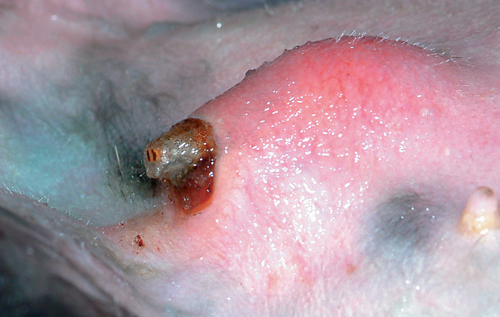Rabbit Medicine and Surgery Q&A 16
Revision as of 19:05, 10 August 2011 by Ggaitskell (talk | contribs) (Created page with "{{Template:Manson Keeble Meredith}} centre|500px <br /> '''A two-year-old male castrated rabbit in the USA is housed in an outdoor hutch for t...")
| This question was provided by Manson Publishing as part of the OVAL Project. See more Rabbit Medicine and Surgery questions |
A two-year-old male castrated rabbit in the USA is housed in an outdoor hutch for the warm spring and summer months. The owner noticed an area of matted fur on the side of the rabbit’s neck that seems painful. Otherwise the rabbit is acting bright and alert, passing normal droppings and has a good appetite. The matted fur around the area is clipped and beneath it is found a subcutaneous swelling with a small hole at its tip.
| Question | Answer | Article | |
| What word best describes this condition? | Myiasis, defined as the infestation of living animals with dipteran fly larvae. The larva embedded in the neck of this rabbit is most likely a Cuterebra spp. (order Diptera, family Cuterebridae), also called the rabbit botfly.
|
[[|Link to Article]] | |
| Describe your treatment and prevention plan. |
|
[[|Link to Article]] | |
